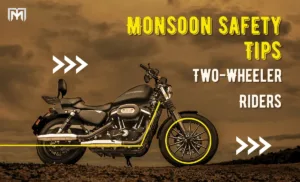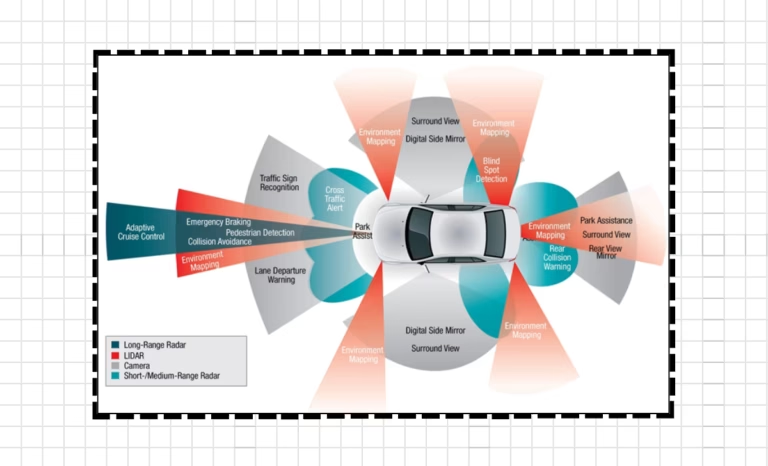The monsoon season brings relief from the scorching heat and rejuvenates the environment. However, it also presents unique challenges for motorcycle riders. Riding on wet and slippery roads requires extra caution and preparation to ensure a safe and enjoyable experience. In this article, we will discuss essential tips for riding two-wheelers during the monsoon, helping you navigate through the rainy season with confidence and minimize the associated risks.
In this article
In this article
Check Your Tires:
Before heading out in the rain, inspect your tires thoroughly. Ensure they have sufficient tread depth to provide adequate grip on wet surfaces. Consider replacing worn-out tires to maintain optimal traction. Additionally, maintain the recommended tire pressure as it affects the tire’s contact patch with the road. Well-maintained tires with proper grip reduce the chances of skidding or hydroplaning.
Brake Wisely:
Braking on wet surfaces requires a different approach than on dry roads. Apply the brakes gently and progressively, avoiding sudden or harsh braking that can cause the wheels to lock up. Familiarize yourself with the braking characteristics of your motorcycle in wet conditions and practice controlled braking techniques. Leave ample space between your motorcycle and the vehicle in front to allow for a longer braking distance.
Be Mindful of Puddles and Standing Water:
Puddles and standing water may hide potholes, debris, or uneven surfaces, posing a significant risk to riders. Approach them cautiously and try to avoid riding through them whenever possible. If you can’t avoid them, reduce your speed and ride in a straight line, keeping both feet on the footrests to maintain balance. Be aware that water splashes from passing vehicles can further reduce visibility and grip, so adjust your riding accordingly.
Maintain Visibility:
Rain can substantially reduce visibility for you and other drivers. Even in the daytime, use your motorcycle’s headlights to improve visibility. Wear a high-visibility reflective vest or rain gear with reflective stripes to make oneself more visible to other drivers. To avoid fogging, keep your visor or goggles clean and use an anti-fog solution. Prioritize clear visibility to effectively anticipate and respond to potential threats.
Slow Down and Maintain Distance:
Reducing your speed is crucial when riding in wet conditions. The decreased grip on wet surfaces requires longer stopping distances, so maintain a safe distance from the vehicle ahead of you. Slowing down also allows you to navigate through slippery surfaces and unexpected obstacles more easily. Adapt your speed to match the road conditions, and avoid abrupt changes in direction or speed to maintain stability.
Stay Alert to Road Hazards:
Roads are prone to hazards such as potholes, loose gravel, fallen leaves, and slippery surfaces during the monsoon season. Watch for these potential hazards and adjust your riding accordingly. Examine the road ahead of you and be ready to react to any obstacles or changes in road conditions. Being proactive and aware of your surroundings can help you avoid accidents and keep your motorcycle under control.
Proper Rain Gear:
Invest in high-quality rain gear that is waterproof and breathable. A good rain suit will keep you dry and comfortable throughout your ride, preventing water from seeping through and chilling your body. Ensure your rain gear is equipped with reflective elements for added visibility. It’s also a good idea to carry a spare set of dry clothes to change into once you reach your destination.
Read: Best Riding Jackets for Bike Riders
Conclusion:
Riding a two-wheeler during the monsoon season requires extra caution and preparation. By following these top tips, you can enhance your safety, minimize risks, and enjoy your rides despite the rainy conditions. Remember to prioritize tire maintenance, practice controlled braking, stay alert to road hazards, and invest in proper rain gear. Embrace the joys of riding during the monsoon while prioritizing your safety at all times. Happy and safe riding!
Also, Read: How to Find the Perfect Car Phone Holder for Your Needs




